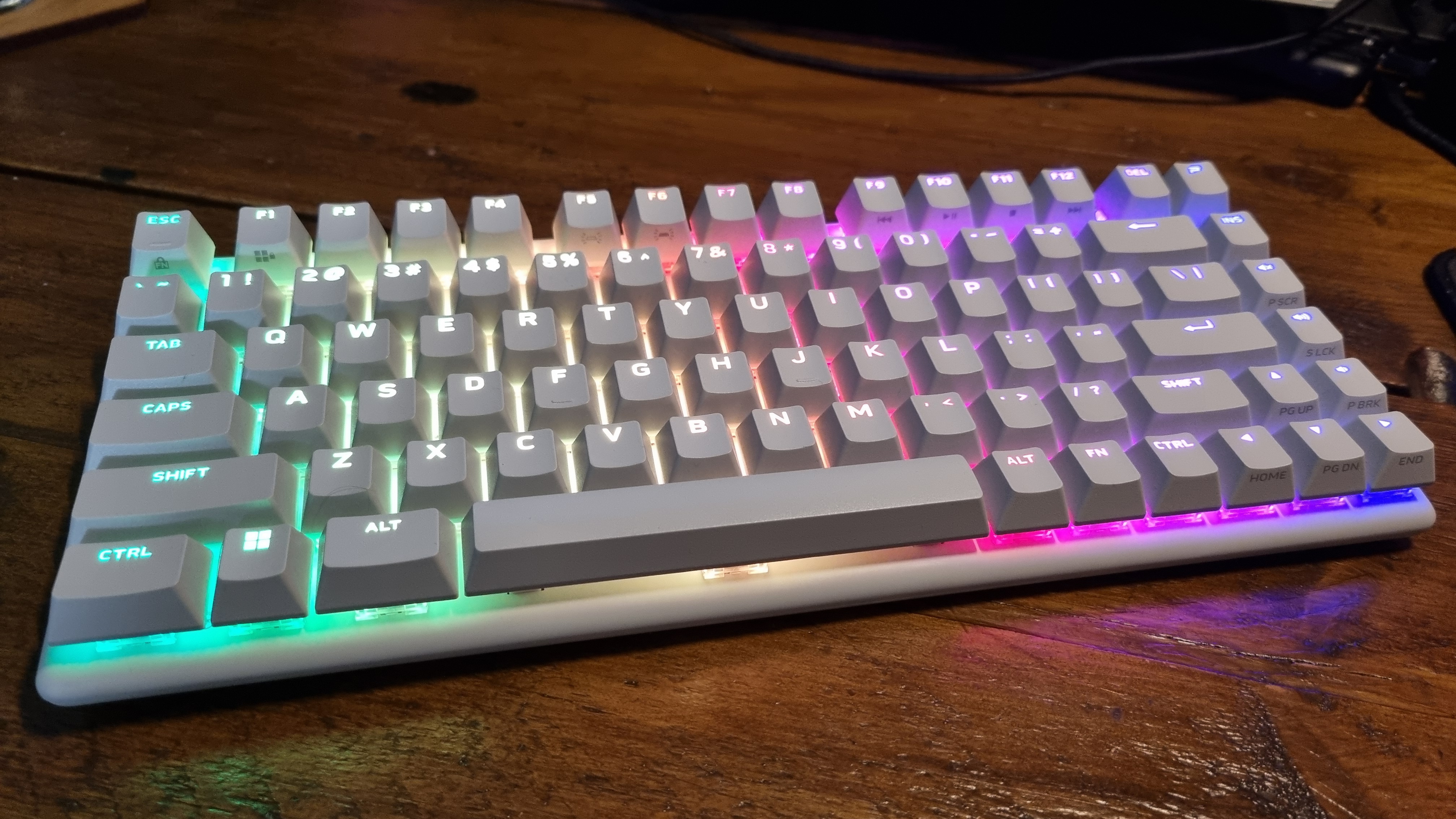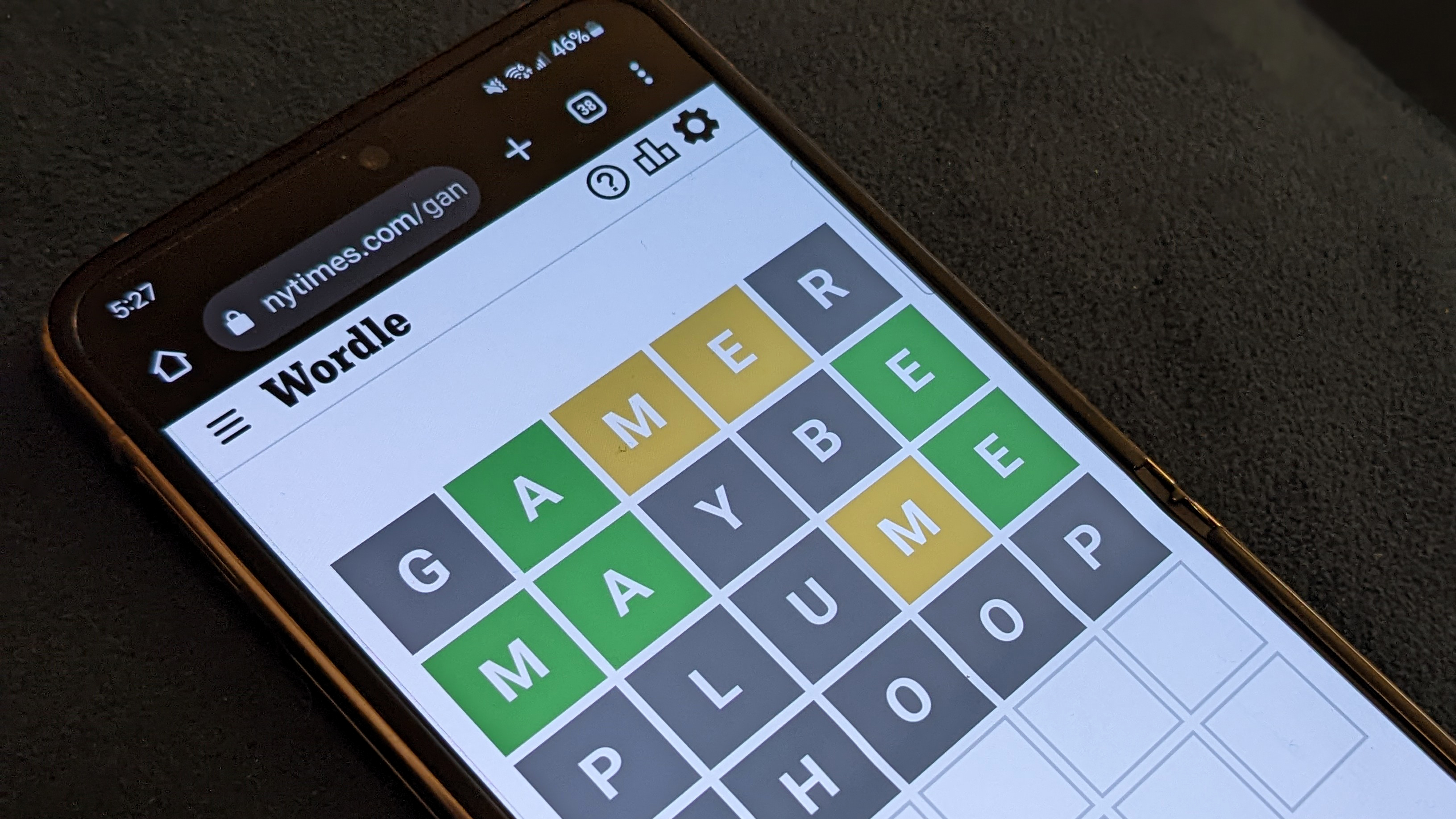
Refreshingly old-school yet with all the mod cons.
I’m a big fan of Ridley Scott’s Alien, a 1979 sci-fi classic that pits a crew of space miners against the now-famous xenomorph, a gigantic beastie stalking the hallways of the good ship Nostromo. I mention this for two reasons: One, it’s a good excuse to link Alienware to one of my favourite films of a similar name, and two, because the late-70’s futuristic aesthetic of that film cemented a much-copied standard in sci-fi design.
Certain rooms in the Nostromo are full of white hardware, rounded edges, and clacking, clocking keyboards. The Alienware Pro Wireless Keyboard seems to wear that influence on its sleeve, as it wouldn’t look out of place tucked into the console of a stasis pod in the film.
What we have here is a 75% keyboard with decent specs. With hot-swappable Alienware linear mechanical switches fitted as standard (you can swap in both 3-pin and 5-pin models with the included tool), 1 KHz polling over 2.4 GHz wireless, a Bluetooth 5.1 connection, and a USB Type-C port, the Alienware certainly has a lot of the must-haves of a modern wireless gaming keyboard covered. And at $200/£162, it certainly isn’t cheap, but right out of the box it screams premium design and build quality.
There’s nary a flex out of the chonky bottom plate, the tilting feet have a lovely soft-click locking action, and switching it on for the first time with the excellent-feeling rear-mounted switch reveals an impressive light show. Something about the Pro Wireless’ timeless look makes this sort of RGB lighting a surprise, and the lettering lights up consistently over every key, including longer ones like the Shift and Enter caps. Logitech Pro X 60, take note.
(Image credit: Future)
Switches: Alienware linear mechanical switches, hot-swappable
Keycaps: PBT double-shot
Connectivity: Wireless (USB 2.4 GHz receiver or Bluetooth 5.1), USB
Keys: 83 in total, remappable
Tilting: Fold-out legs
Backlighting: AlienFX RGB lighting
Dimensions: 31.24 cm x 12.70 cm x 4.06 cm
Weight: 820 g/ 1.8 lbs
Price: $200/£162
I see so many RGB-lit keyboards these days, it’s not often I stand back and admire the show. This combination of old-school looks and pin-sharp lighting, however, really does create an impressive visual effect. My Lunar Light—or more simply, white—model softens the underglow very nicely.
In fact, I’ll go one step further: It’s the only white peripheral I’ve seen so far that’s made me really want one in this particular colour.
It’s also available in Dark Side of the Moon, or as it’s more traditionally called, black. Ah go on, when pushed, I’d still have the black one. It’s a close run thing though, and given my particular tastes, that means something. It’s a stylish looking device, and something I reckon most people would be proud to have adorning their desks.
Here’s the real kicker though: the sound. The Pro Wireless creates a very pleasing tocking sound while typing, and it immediately gives me a wave of nostalgia every time I reach for the keys.
I grew up using cast-off beige keyboards from the early ’90s on my first machines, and there’s something about that noise that brings back memories of late-night DOS gaming in my pyjamas.
Again, I think of the clacking, clocking keyboards of the Nostromo. Was that a hissing behind me, and a shadow over my shoulder? Must be nothing. Moving on.
In terms of typing feel, the linear red switches are exactly as you’d expect. Smooth, easy to press (with a 40g actuation force) and a good amount of travel. These are factory lubed, and slide under your fingertips with a good combination of accuracy and slight resistance that leads to a positive overall feel.
Being a 75% board, you don’t feel like you’re missing out on any vital keys, either. There’s a proper row of function keys, some useful media control keys off to the right hand side (that also double up as Print Screen, Scroll Lock etc when holding the function key), and a stylised ‘P’ located at the top right of the board allows for profile switching.
(Image credit: Future)
(Image credit: Future)
(Image credit: Future)
(Image credit: Future)
All these sorts of shenanigans are handled by the Alienware Command Center. Here you can assign per-key lighting, key binds, and various other settings to the profile switching key. I recently reviewed the Alienware Pro Wireless gaming mouse and extolled the virtues of the simple nature of the software, and here it’s much the same story. Everything’s well laid out, easy to configure, and customizable to your heart’s content.
Where the mouse fell down, however, was a matter of two key points: some squishy, mushy feeling side buttons that sacrificed quality for low weight, and the price. On the first, the Alienware Pro Wireless Keyboard has no such issues. Everything about it feels very high quality, as it makes no such pretensions towards lightness. This is a meaty, solid-feeling affair, with excellent switch feel and an overall robustness that lets you know your money went towards a premium product.
There’s something about that noise that brings back memories of late-night DOS gaming in my pyjamas.
The price, however, is still where things get difficult. At $200, it’s a full $20 more expensive than our current pick for the best gaming keyboard, the Asus ROG Strix Scope II 96 Wireless. That’s unfortunate, as there you’re getting a full-sized board with included wrist rest, a brilliant adjustable multimedia control wheel, and some of the best switch feel we’ve ever tested.
You also get sound dampening that, as our Jacob puts it, really works. While the Alienware Pro also has sound dampening layers, that distinctive tock is a love it or hate it kind of affair. While I’m a fan, I have noticed that when someone else is using the Wireless Pro, I can hear it in every room of my house.
(Image credit: Future)
(Image credit: Future)
(Image credit: Future)
(Image credit: Future)
(Image credit: Future)
While my walls are thin, that sound does have a tendency to carry, and some are going to find that it sets their teeth on edge—rather than providing the appropriate nostalgia hit.
So, the Asus is still the better buy. But what if you want something more compact? Well, then it runs into the might of the Keychron Q3 Max. That particular keeb is $14 more expensive, but it’s got an achingly cool blacked-out aesthetic, a control knob, and a typing feel that’s truly fantastic thanks to its Gatreon Jupiter Red switches.
✅ You like old-school keyboard noises: The Alienware creates a distinctive ‘tock’ sound while typing that’s reminiscent of keyboards of old.
✅ You like your R, your G, and your B: The AlienFX backlighting here is dazzling without being obnoxious (on most settings), making it a bit of a looker in low light.
❌ You’re on a budget: At $200/$162, it’s pricey enough that it runs into some of the best keyboards we’ve ever tested, and it isn’t quite at that level.
❌ You’re looking for a quiet keeb: While it’s not loud in a traditional sense, the Alienware Wireless Pro creates a very distinctive noise that tends to travel further than you might think.
Oh, and it sounds “creamy”. I won’t pretend to know exactly what that means, as its terminology for true keyboard obsessives, of which I am not yet one. The Alienware doesn’t seem like a candidate though, for what it’s worth. If we’re going for dairy-based analogies, the sound of the Pro Wireless is more like whole milk. Not for everyone, but I get a kick out of it, and I’ll be damned if you’re changing my mind.
Overall though, the Alienware Pro Wireless is an excellent keyboard, with a pleasant action, nostalgic sound, and sci-fi style good looks. Price-wise, though, It’s just a little too expensive for what you get compared to the competition, despite its brilliance.
A fantastic addition to any gamers setup, no doubt, but just a touch too expensive for the feature set on offer to put it into the hall of all-star greats. That being said, If Alienware were to skim a little off the top—and maybe tone down the noise a tad more—it’d be a real contender for a top spot.
Now, back to my emails. You’ll find me here in the corner, tocking away like my life depended on it.







